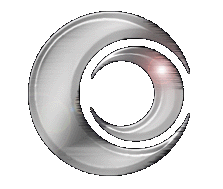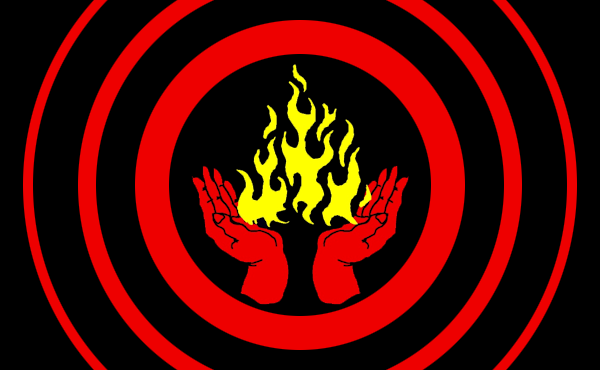I am the resurrection, and the life; he that believeth in me, though
he were dead, yet shall he live.
-- John 11:25 |
Non omnis moriar.
(Not all of me will die)
-- Horace |
Cryonic suspension is an experimental procedure whereby patients who no longer
can be kept alive with today's medical abilities are preserved at low temperature
for treatment in the future. A "typical" cryonics procedure goes, or rather
should go, as follows: after de-animation (clinical death, usually
pronounced after cessation of heartbeat and breathing), the patient is released
into the custody of the (local) cryonics emergency
team and/or a specially trained & equipped (local)
mortician, and cooled either with ice-filled bags or in a
portable
ice bath (PIB) with a spray cooling device ("squid"), which further
accelerates the temperature descend, to approx. 5-10*C. During cooldown,
the patient's head always has top priority, for obvious reasons. If the patient
hasn't been dead for more than an hour or so, and if his body is still largely
intact, he is simultaneously re-oxigenated (optional) and treated with various
medications, including anticoagulants like heparin, which helps to
delay and reduce
ischemic
brain damage and the formation of blood clots. The better the condition of the circulatory system, the easier it will be to perfuse the patient with cryoprotectants later on -- more on that
below. The medications are circulated by external chest compressions, as
with CPR, by means of a compressed air-driven heart-lung resuscitator (known as
a thumper) or a similar device. Unless someone on the emergency team has the necessary skills, proper IV administration of the medications will require the cooperation of a physician,
nurse, or paramedic.
After the initial cooling and stabilization have been taken care of, the
patient is moved to a suitable location (a mortuary or cryonics rescue vehicle, for example) where his blood is replaced by an organ-preserving solution, a procedure known as washout. The patient is then packed in ice and shipped to the main cryonic storage facility where
cryoprotectants, chemicals (such as glycerol) which reduce the formation
of ice crystals during the freezing process, are
carefully
pumped into the body, a process called "perfusion" (in some cases, perfusion
can also be done at a local mortuary or in a mobile unit). When the perfusion is completed, the
body is put in in a silicone oil bath or an insulated box with dry ice vapors, and cooled with
dry ice to
approx. -79*C. If the patient has opted for a "neurosuspension", his head
is removed first. The cooldown procedure takes approximately 2-7 days (depending
on the method used) for whole body patients and 1 day for neurosuspension
patients.
 When the desired temperature has been reached, the patient is removed from
the silicone bath or dry ice box, put in a special holding tank,
and gradually cooled with liquid nitrogen vapors to -196*C, the temperature
of liquid nitrogen (LN2). Prior to the final temperature descent, the patient has
been put in a sleeping bag and attached to a specialized tray -- this to
minimize temperature fluctuations and to make handling safer & easier
in case he needs to be moved to a different storage vessel. At such low temperatures,
all chemical and biological activity (and therefore decay) is slowed
down to a point where it effectively becomes negligible, at least
for the next 10,000 years or so. After approx. 5-7 days of vapor cooling,
the frozen body (or head) is finally placed in an insulated storage tank
(either a stainless-steel "dewar", which is essentially a giant Thermos bottle,
or a fiberglass "cryostat"), and is completely submerged, head-down,
in liquid nitrogen. The inverted position is a simple but effective
safety precaution; this way, if something goes wrong and all the LN2 is allowed
to evaporate, the head thaws last. Here the cryonaut will be stored until
he can be fully repaired, rejuvenated, enhanced, and successfully revived.
When the desired temperature has been reached, the patient is removed from
the silicone bath or dry ice box, put in a special holding tank,
and gradually cooled with liquid nitrogen vapors to -196*C, the temperature
of liquid nitrogen (LN2). Prior to the final temperature descent, the patient has
been put in a sleeping bag and attached to a specialized tray -- this to
minimize temperature fluctuations and to make handling safer & easier
in case he needs to be moved to a different storage vessel. At such low temperatures,
all chemical and biological activity (and therefore decay) is slowed
down to a point where it effectively becomes negligible, at least
for the next 10,000 years or so. After approx. 5-7 days of vapor cooling,
the frozen body (or head) is finally placed in an insulated storage tank
(either a stainless-steel "dewar", which is essentially a giant Thermos bottle,
or a fiberglass "cryostat"), and is completely submerged, head-down,
in liquid nitrogen. The inverted position is a simple but effective
safety precaution; this way, if something goes wrong and all the LN2 is allowed
to evaporate, the head thaws last. Here the cryonaut will be stored until
he can be fully repaired, rejuvenated, enhanced, and successfully revived.
[Note:click here (TransTime),
here (Alcor)
or
here (Cryonics Institute) for more detailed descriptions of
suspension protocols].
Though cryonics is still in its infancy, and thus far from perfect, there's
good reason to believe that future (approx. 20-80 years) advances in fields
like nanotech, neuroscience, genetics, and computing will be able to repair
much, if not all, of the damage caused by accident, disease, aging, and the
freezing process itself. See
The Molecular
Repair of the Brain by Ralph C. Merkle for an example of how this
(theoretically) could be done.
Vitrification
Thanks to the pioneering cryoprotectant research at
21st Century Medicine, it is now possible
to
vitrify,
rather than just "freeze", human brains. Whole bodies may follow within just
a few years. Vitrification -- conversion to a glass-like solid state -- is
a process that causes much less tissue damage than current suspension techniques,
which means that cryo-patients will be revived sooner, and that there will
be far less risk of damage to the patient's mental structure (i.e. less risk
of memory loss and/or personality changes). Alcor is currently
the only cryonics organization offering neurovitrification.
Costs
Contrary to popular belief, cryonics is not just for the rich -- in
fact, most people signed up for suspension could best be described as "middle
class". Though the procedure in itself is rather expensive (approx. US $30,000 up to somewhere in the $120,000 - 150,000 range, depending on your cryonics organization, geographical location, manner of death, and suspension protocol), it can be funded by means of life insurance.
Contact one of the cryonics organizations and/or
local groups for more information.
 Tip#1: even if you don't want to sign up for suspension in the near future, it is wise to arrange a suitable life insurance policy anyway. The (insurance) rates are directly related
to your age, health & "social status", and you may not be able to afford
it by the time you decide to sign up. Procrastination killed the cat, so
to speak.
Tip#1: even if you don't want to sign up for suspension in the near future, it is wise to arrange a suitable life insurance policy anyway. The (insurance) rates are directly related
to your age, health & "social status", and you may not be able to afford
it by the time you decide to sign up. Procrastination killed the cat, so
to speak.
Needless to say, it is always better to have a cryo contract in place as
soon as possible. We live in a dangerous, primitive world where death can come for anyone
at any time and even if you have enough funding there are often serious delays
when last-minute cases are handled, and cryonics organizations may charge
you extra. If they accept the case at all, that is; due to the
considerable risk of legal and financial complications (like relatives fighting
the organization over the insurance money, or simply losing interest and
refusing to pay) any cryonics organization will think twice before accepting
a last-minute, non-member case. Their primary concern is, and should
be, the well-being of their regular members and the frozen patients, after
all.
Tip#2: if you really can't fund a proper suspension
(or if you're a bloody
miser),
you can still "sign up" for plastination,
which just might be a "viable" cryonics alternative. Hey, nothing
to lose, it's potentially available for FREE, or at least at a fraction of
the cost of even the cheapest cryonics procedure. Various other low-budget
options are also available for determined and enterprising individuals, click
the above link for more info.
-Why is cryonics so expensive?
-Why is freezing in liquid nitrogen better than other kinds of
preservation, such as drying or embalming?
-What about overpopulation?
-How many people are frozen right now?
-Is anyone getting rich from cryonics? What are the salaries at these
organizations like?
-What are the pros and cons of neurosuspension (only freezing the
head)?
-What obligations do the suspension organizations have to the people
they have suspended? Will they pay for revival and rehabilitation?
-Was Walt Disney really frozen?
These and many other questions are answered in the
cryonics FAQ [Note: it's a bit dated, but still
fairly useful for getting a general impression of the cryonics movement.
A more current FAQ, courstesy of Cryonics Institute, can be
found
here].
(Introductory) Links

Like sheep they are laid in the grave; death shall feed on them; and
the upright shall have dominion over them in the morning; and their beauty
shall consume in the grave from their dwelling.
-- Psalms 49:14 |
When there's no more room in Hell, the dead will walk the Earth.
-- Zombie: Dawn of the Dead (1978) |
By making cryonics arrangements you:
1) Do the rational thing; it's the only chance you have should you
die before powerful life extension technologies like
mind
uploading become available.
2) Help to support the cryonics movement, which means better
infrastructure, freezing techniques and other useful things which will benefit
you in case of (premature) death. As the movement is still very small,
every new member really counts. A wait-and-see attitude doesn't help anyone.
3) Buy a certain peace of mind (without having to compromise your
rationality as with religion).
4) Do the civilized thing. Burial, cremation and other such incredibly
primitive, barbaric practices should have no place in 21st century!
Think about it: we have put people on the moon, split the atom and are now
on the brink of creating
superhuman intelligence, yet we still stuff our dead into the ground
together with some dying flowers just like the Neanderthals did millennia
ago. What is wrong with this picture? Obviously, choosing cryonic suspension
is a sign of Enlightenment and good taste, if nothing else.
|
It works |
It doesn't work |
| Sign up |
Live |
Die, lose
life insurance |
| Do nothing |
Die |
Die |
Cryonics according to Ralph
C. Merkle, the short version.
Back to Index
Service Providers
For those interested in a cryo contract, here's a complete list of currently active cryonics organizations (for local, non-USA contacts, click here).
Back to Index
Mailing List
If you're interested in discussing cryonics from a European perspective,
or want to be kept up to date regarding changes to this page & new
cryonics-related developments in general, you can join the cryonics-euro
mailing list (see below). Low traffic, but occasionally quite informative!

Click to subscribe to cryonics-euro mailing list
Some Recommended Reading
-
The Prospect of
Immortality, by Robert C.W. Ettinger. Often called the "Bible" of
the cryonics movement. This is indeed the book that started it all back in
the 60s. The online version has been recently updated, and is (still) without
a doubt one of the best introductions to cryonics.
-
Man Into
Superman, also by Robert C.W. Ettinger. This is more or less the
sequel to The Prospect of Immortality, and explores the possibilities
of our transhuman future.
An eloquent, razor-sharp attack on the many absurdities of our deathist society.
Full text online.
-
Forever For
All: Moral Philosophy, Cryonics, and the Scientific Prospects for
Immortality, by R. Michael Perry. A nearly 500-page meditation on cryonics
and various Transhumanist topics, including the technological Singularity
and the Omega Point. Available in printed and ebook (.PDF) format. 25 pages
of the latter can be downloaded for free.
-
Cryonics: Reaching
for Tomorrow A comprehensive introduction to cryonics, courtesy of
the Alcor Life Extension Foundation. Full text online.
-
Engines of
Creation -- The Coming Era of Nanotechnology, by K. Eric Drexler.
This book is to nanotechnology what The Prospect of Immortality is
to cryonics. It explains the basics of the coming nanotech revolution, and
has a chapter that specifically deals with the implications for cryonic(ist)s;
nanotech is one of the key technologies needed to successfully revive the
frozen. Full text online.
-
Nanomedicine, Volume
I: Basic Capabilities, by Robert A. Freitas Jr. "The first book to
comprehensively address the technical issues involved in the medical applications
of molecular nanotechnology and medical nanodevice design." Full text online.
-
Death to Dust:
What Happens to Dead Bodies? (Second Edition), by Kenneth V. Iserson,
M.D. "Provides the answers to the questions about corpses you were afraid
to ask: How does a body really turn to dust? What happens during autopsies,
dissection, embalming, cremation, and cryogenic preservation? And what about
cannibalism, body snatching, and the secret rites of various cultures? A
textbook, a resource, and entertaining reading!"
-
Wie der
Mensch den Tod besiegt - Technische Verfahren zur Unsterblichkeit
(How Man Conquers Death - Technical Means to Immortality), by Klaus Reinhard.
Full text online, in German only.
|













 When the desired temperature has been reached, the patient is removed from
the silicone bath or dry ice box, put in a special holding tank,
and gradually cooled with liquid nitrogen vapors to -196*C, the temperature
of liquid nitrogen (LN2). Prior to the final temperature descent, the patient has
been put in a sleeping bag and attached to a specialized tray -- this to
minimize temperature fluctuations and to make handling safer & easier
in case he needs to be moved to a different storage vessel. At such low temperatures,
all chemical and biological activity (and therefore decay) is slowed
down to a point where it effectively becomes negligible, at least
for the next 10,000 years or so. After approx. 5-7 days of vapor cooling,
the frozen body (or head) is finally placed in an insulated storage tank
(either a stainless-steel "dewar", which is essentially a giant Thermos bottle,
or a fiberglass "cryostat"), and is completely submerged, head-down,
in liquid nitrogen. The inverted position is a simple but effective
safety precaution; this way, if something goes wrong and all the LN2 is allowed
to evaporate, the head thaws last. Here the cryonaut will be stored until
he can be fully repaired, rejuvenated, enhanced, and successfully revived.
When the desired temperature has been reached, the patient is removed from
the silicone bath or dry ice box, put in a special holding tank,
and gradually cooled with liquid nitrogen vapors to -196*C, the temperature
of liquid nitrogen (LN2). Prior to the final temperature descent, the patient has
been put in a sleeping bag and attached to a specialized tray -- this to
minimize temperature fluctuations and to make handling safer & easier
in case he needs to be moved to a different storage vessel. At such low temperatures,
all chemical and biological activity (and therefore decay) is slowed
down to a point where it effectively becomes negligible, at least
for the next 10,000 years or so. After approx. 5-7 days of vapor cooling,
the frozen body (or head) is finally placed in an insulated storage tank
(either a stainless-steel "dewar", which is essentially a giant Thermos bottle,
or a fiberglass "cryostat"), and is completely submerged, head-down,
in liquid nitrogen. The inverted position is a simple but effective
safety precaution; this way, if something goes wrong and all the LN2 is allowed
to evaporate, the head thaws last. Here the cryonaut will be stored until
he can be fully repaired, rejuvenated, enhanced, and successfully revived.
 Tip#1: even if you don't want to sign up for suspension in the near future, it is wise to arrange a suitable life insurance policy anyway. The (insurance) rates are directly related
to your age, health & "social status", and you may not be able to afford
it by the time you decide to sign up. Procrastination killed the cat, so
to speak.
Tip#1: even if you don't want to sign up for suspension in the near future, it is wise to arrange a suitable life insurance policy anyway. The (insurance) rates are directly related
to your age, health & "social status", and you may not be able to afford
it by the time you decide to sign up. Procrastination killed the cat, so
to speak.


